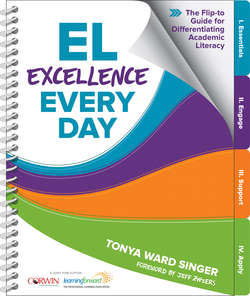Читать книгу EL Excellence Every Day - Tonya Ward Singer - Страница 35
На сайте Литреса книга снята с продажи.
Ways We Might Get Stuck
ОглавлениеValuing EL assets often means valuing what we don’t understand. This can be tough as it requires us to see beyond what we know and our own cultural sense of “normal” to value what is “normal” from others’ point of view. This requires both humility to be aware of what we don’t know and empathy to find value in how others experience and view the world. We can get stuck easily when we:
Miss Our Own Cultural Lens: We all have cultural norms and values that are shaped by and shape our reality. These are the lens through which we interpret what is right, normal, just, unjust, important, unimportant, and more. To value students’ diverse linguistic and cultural assets, we have to recognize that our lens on the world isn’t the only lens or the superior lens. It’s hard to do this especially if we have always lived and worked in an environment where our lens is the norm or our lens is given a superior status. When our cultural norms are also the norms of our environment, they are often invisible to us. We need to learn to make the invisible visible. To see beyond our lens and value different lenses our students use to see the world, we need to first become aware that we also have a cultural lens that influences what we see.
Assume One Language Diminishes Another: It feels intuitive to think that expertise in one language comes at the expense of growth in another language. Such assumptions have historically led to problematic policies such as schools forbidding ELs from using their primary language on campus and educators discouraging parents from using their home language with their kids. Research proves these assumptions wrong. In Promoting Academic Achievement Among English Learners: A Guide to the Research, authors Goldenberg and Coleman (2010) assert “the best scientific studies we have—those that control for extraneous variables and provide the most confidence in their conclusions—show that in fact using students’ primary language (L1) promotes their achievement in English (their L2)” (p. 25). Flip to pages 23–26 for strategies to value and build on students’ home language skills as assets for their learning.
Rely on Assumptions: Our brains are wired to make assumptions. We all have implicit, unintentional biases that help us efficiently organize new information. Implicit biases about different cultural groups, ethnic groups, or language groups can lead us to make assumptions about our students that are wrong. Biases, implicit or explicit, can lead us to see other cultures or languages as inferior to our own.
